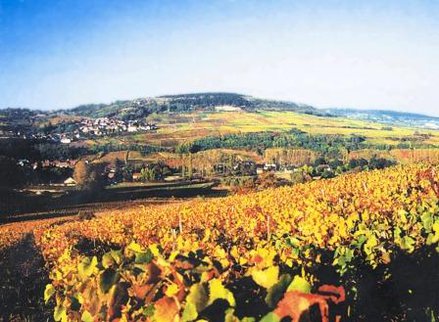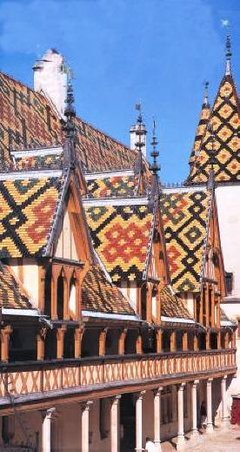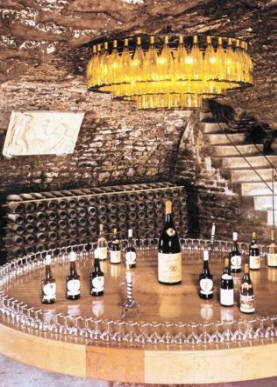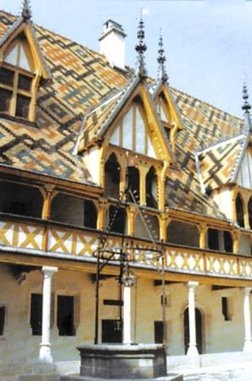
Costa del sol bjuder på många dina utflyktsmål.
Läs om mina förslag på vackra bergsturer.
Välkommen till min webbsida som handlar om trivsamma platser i Europa, utflykter i Andalusien och sköna promenader i Stockholm.
Klicka på det som intresserar dig!
Trevlig läsning

BEAUNE
A31, 2 km west of exit Beaune
We are in the winegrowing heartland of Bourgogne. Everything here revolves around wine, and where else would you find the temple devoted to all things wine?
Yes, The Athéneum sells nothing but wine and wine nick-nacks – of varying degree of necessity – from your indispensable corkscrew to novelties like the “pic bouchon”, a little silver gadget on a chain with two pins to stick into the wine cork so you can hang it around the neck of your crystal carafe. I would never have guessed there were so many odds and ends associated with wine!

FOCUS ON WINE
Beaune of course has its obligatory wine museum, housed in the old ducal palace Hôtel des Ducs. It was built between the 14th and 16th centuries and is laid out asymmetrically around an attractive inner courtyard. The museum has a comprehensive collection of everything to do with wine and the history of wine-growing from antiquity to the beginning of the 20th century. The guided tour starts in the fermentation cellar with its enormous grape presses from the 14th century and ends in the French wine hall, adorned with a Bacchanalian tapestry by Lurçat. The fact that Beaune lives by and for wine is further demonstrated by the subterranean labyrinth of wine cellars crisscrossing the town. Even the bastions and towers of the old defence walls have been made use of for wine storing.

THE TOWN OF THE SUN GOD
Today Beaune is still encircled by city walls on top of which you can take a walk and see the town from above. The walls were constructed in the 12th century but have been extended and strengthened over the centuries. But there are traces of human habitation here long before the wall came into existence. The first houses were built as early as around 50 years B.C. by the Gauls. Beaune in fact takes its name from the Celtic sun god Belen. Then, as now, wine was grown in these parts and sunshine is of course of utmost importance to the crops.
Belen was also protector of the water springs and Beaune gets its fresh water from the two streams Aigue and Bouzaise. Water and wine will go a long way to sustaining human life. Add to that favourable conditions for vegetable growing and cattle raising, and you have the cause of the good cuisine of Bourgogne! In Beaune you certainly get to enjoy the delights of the table. You will find appealing street cafés and tempting restaurants everywhere, often housed inside historical cellar vaults.

WORKHOUSE IN DE LUXE PRESENTATION
After the waves of mass migration through Europe Beaune experienced an upswing. The town wall was erected and the dukes of Burgundy made it their residential town and moved into Hôtel des Ducs, which was their dwelling until they relocated to Dijon in the 14th century. In 1443 the chancellor of the dukes, the extremely rich Nicolas Rolin, founded a hospital for the poor people of Beaune, Hôtel Dieu, today the town’s main tourist attraction. The building, inspired by Flemish architecture, with a stunning, colourful roof, was taken over by nuns and served as a hospital until far into the 20th century. The actual hospital function has since been transferred to more modern premises and Hôtel Dieu is now a museum well worth a visit. The hospital, Hospices de Beaune, owns several vineyards and every year in November a wine auction is being held here, the profits of which go towards the upkeep of the hospital.
MUSEUMS AND BEAUTIFUL HOUSES AT PLACE AU BEURRE
Before leaving Beaune you should take a walk from Hôtel Dieu to Place au Beurre. From here you will easily find the wine museum and the collegiate church of Nôtre Dame, built already in the 12th century in Romanesque style but with many Gothic features dating from later alterations. From Place au Beurre runs the Rue Lorraine where you will come upon a row of beautiful patrician houses from the 16th and up to the 18th century, as well as the Town Hall which also houses the Art Museum, Musée des Beaux-Arts.
Hotel Dieu showing off its gaudy roof
Wine tasting in old cellar vaults
A typical roof in Beune